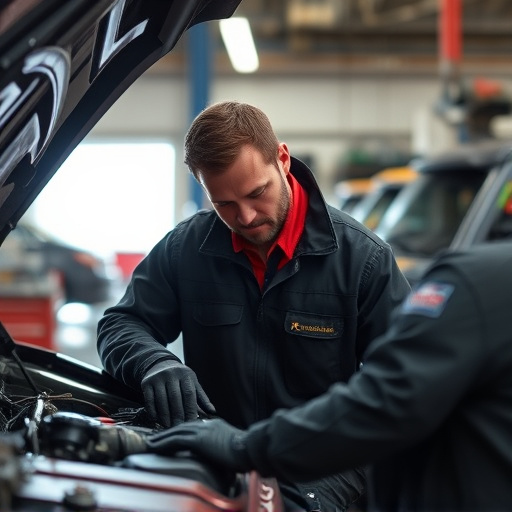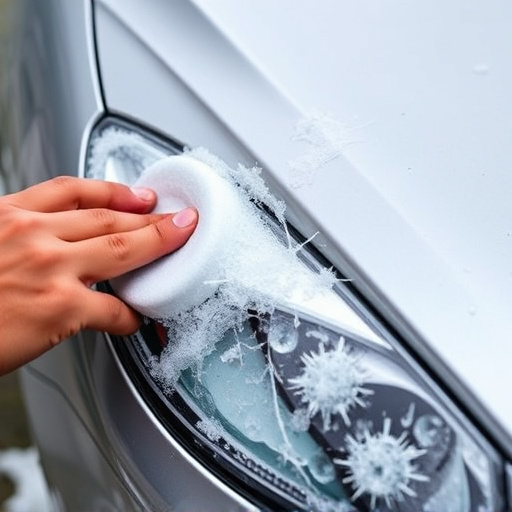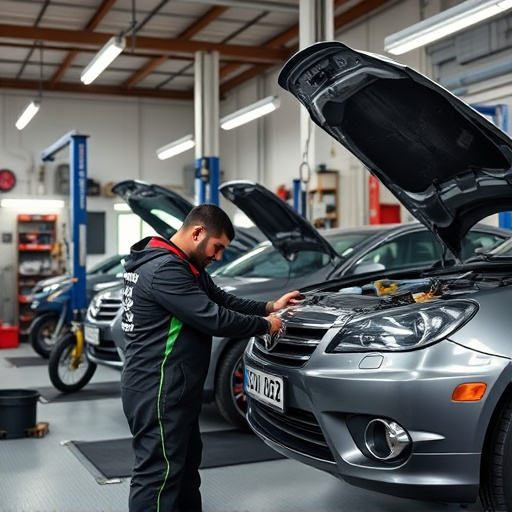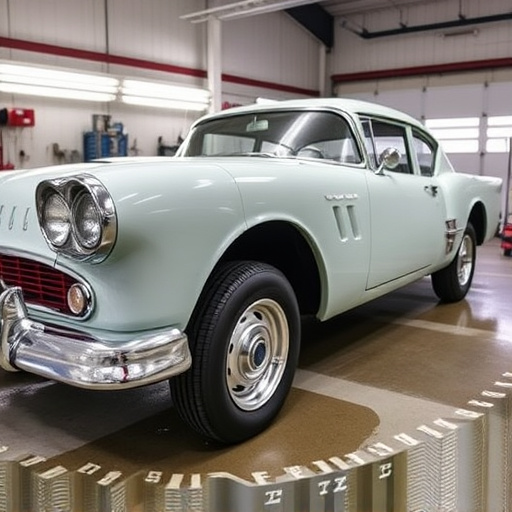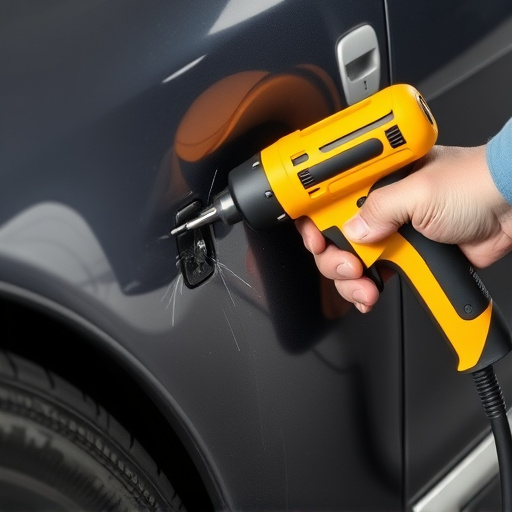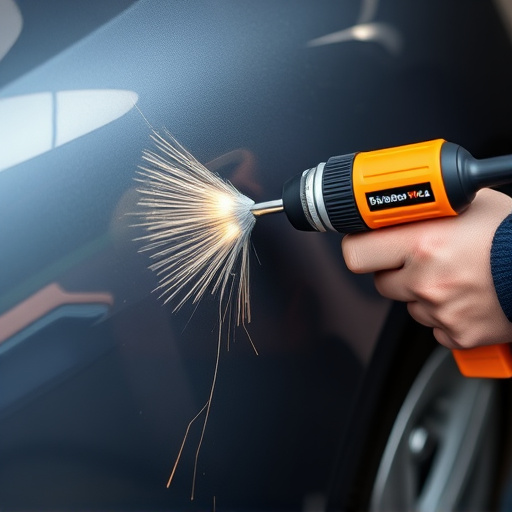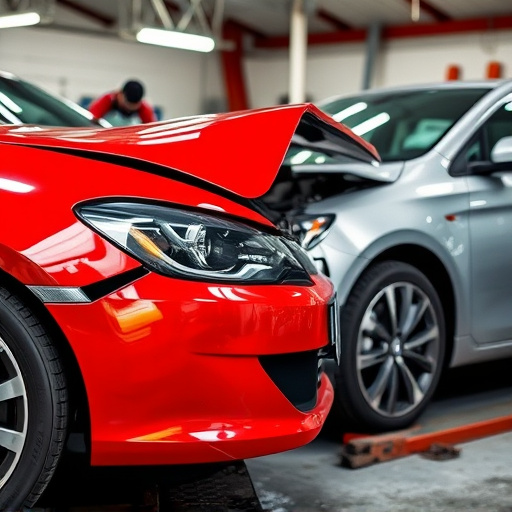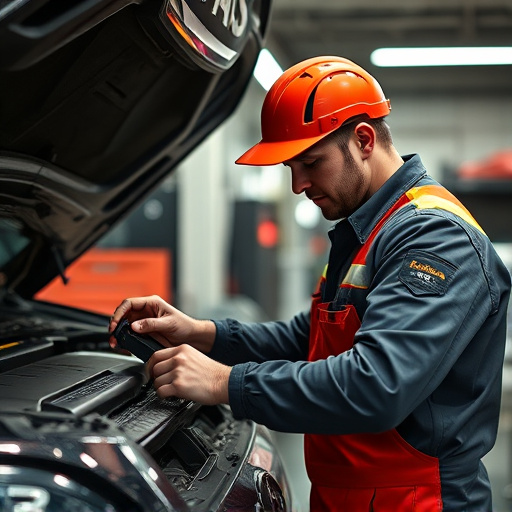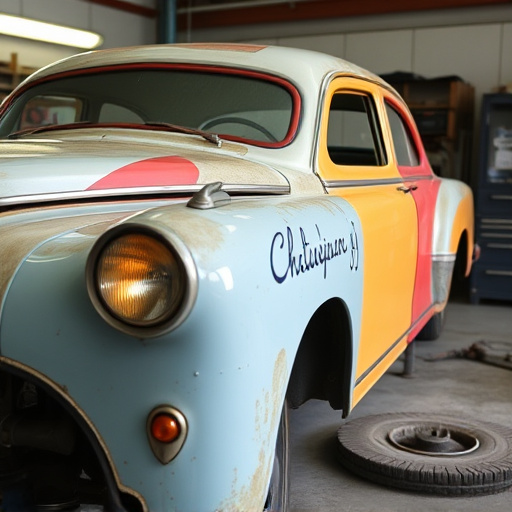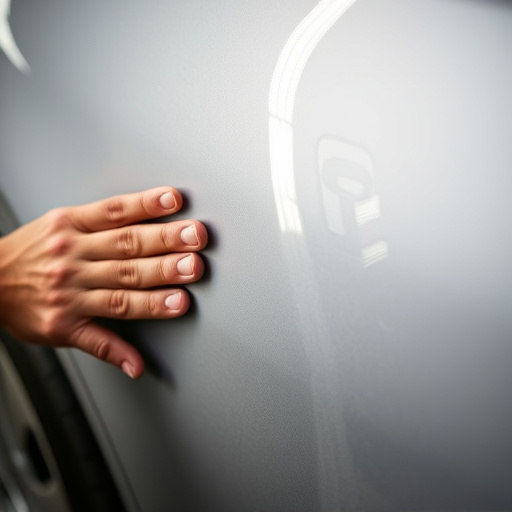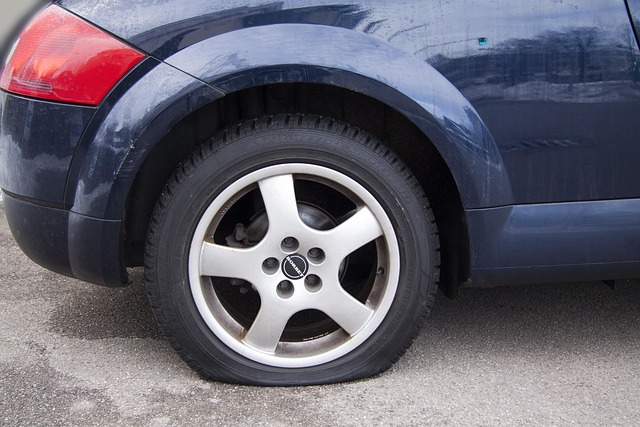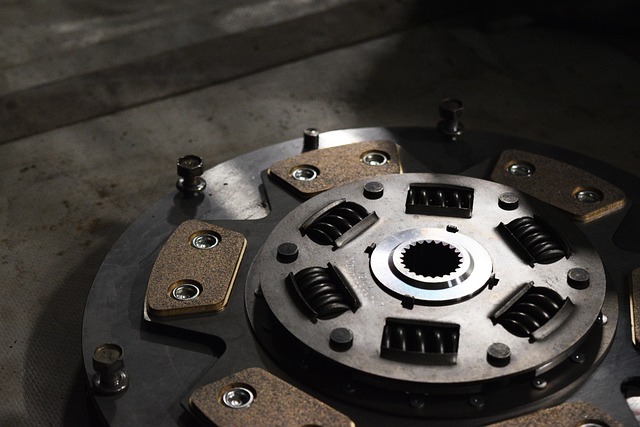Waterborne paints are transforming eco-friendly collision repair by eliminating toxic solvents for a safer, greener alternative. This shift reduces carbon footprints and aligns with sustainable automotive repair goals. By adopting waterborne paints, shops contribute to minimizing environmental impact, offering both ecological benefits and improved finish quality in repairs like Mercedes Benz restoration. Transitioning requires strategic planning, equipment upgrades, staff training, and commitment to high-quality, eco-conscious results.
Waterborne paints are transforming the landscape of eco-friendly collision repair, offering a sustainable alternative to traditional formulas. This article delves into the environmental benefits of waterborne paints and how they minimize toxic emissions, reduce waste, and foster a greener workshop environment. We’ll explore the differences between traditional and waterborne options, providing implementation strategies for collision repair shops looking to adopt these eco-conscious solutions in their processes.
- Understanding Waterborne Paints: Benefits for Eco-Repair
- Environmental Impact: Traditional vs. Waterborne Formulas
- Implementation Strategies: Adopting Waterborne Paints in Collision Repair
Understanding Waterborne Paints: Benefits for Eco-Repair

Waterborne paints have emerged as a significant component in the quest for eco-friendly collision repair methods. These specialized coatings offer a sustainable alternative to traditional automotive finishes, with their primary appeal lying in reduced environmental impact. Formulated with water as the main carrier, these paints eliminate the need for toxic solvents often found in conventional auto repair services, making them safer for both technicians and the surrounding environment. This shift towards waterborne options is not just beneficial for eco-conscious consumers but also has positive implications for the automotive industry’s overall sustainability.
By adopting waterborne paints, collision repair shops can significantly minimize their carbon footprint. The production process of these paints typically involves fewer energy-intensive steps compared to solvent-based formulations, reducing greenhouse gas emissions. Moreover, waterborne technology promotes efficient application, requiring less product and minimizing waste, which aligns with the goals of sustainable automotive repair. This innovation not only ensures a cleaner, greener workspace but also contributes to a more environmentally friendly approach to scratch repair and other auto repair services.
Environmental Impact: Traditional vs. Waterborne Formulas
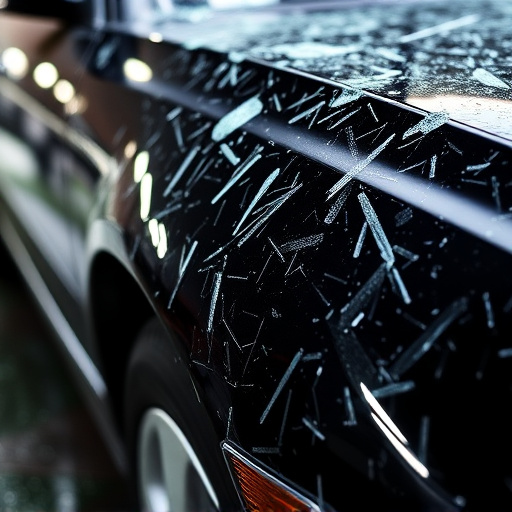
The environmental impact of collision repair processes has become a significant concern, driving the industry towards more sustainable practices, especially in the realm of car bodywork repairs. Traditional paints used in car paint services often rely on toxic solvents and chemicals, contributing to air pollution and posing risks to both workers and the surrounding environment. These volatile organic compounds (VOCs) are released during application and can lead to a range of adverse effects.
Waterborne paints offer a more eco-friendly alternative, with formulas designed to minimize environmental harm. Unlike traditional solutions, water-based coatings do not emit harmful VOCs upon application or drying. This reduction in chemical emissions significantly lowers the carbon footprint associated with car dent repair and bodywork maintenance. Moreover, waterborne paints are easily recyclable, further emphasizing their role as a game-changer in the pursuit of sustainable collision repair methods.
Implementation Strategies: Adopting Waterborne Paints in Collision Repair

The transition to eco-friendly collision repair practices has gained significant traction, and waterborne paints play a pivotal role in this shift. By adopting water-based formulations, automotive repair services can substantially reduce the environmental impact associated with traditional solvent-borne paints. This shift not only aligns with the industry’s push for sustainability but also presents numerous practical advantages.
Implementing waterborne paints in Mercedes Benz repair or any automotive restoration process involves strategic planning. Repair shops must invest in suitable equipment, such as low-volatile organic compound (VOC) spray booths and paint mixers designed for water-based products. Additionally, training staff to handle and apply waterborne paints effectively is crucial. This shift not only contributes to a cleaner environment but also ensures high-quality finishes that meet modern aesthetic standards in automotive repair services.
Waterborne paints play a pivotal role in transforming the eco-friendliness of collision repair processes. By adopting these innovative formulas, the industry can significantly reduce environmental impact and contribute to a greener future. The benefits are clear: lower VOC emissions, minimal waste generation, and efficient application methods. This shift from traditional to waterborne options is not just an environmentally conscious choice but also a strategic move towards more sustainable and cost-effective collision repair practices.

